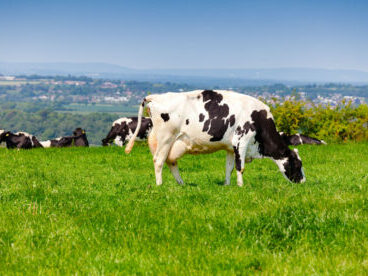If you are going to assess how effectively your diet is supplying the key fatty acids, you need to know where to look.
Milk records – your monitor of fatty acid efficiency
If you are going to assess how effectively your diet is supplying the key fatty acids, you need to know where to look. What are the indicators of effective supplementation? According to UFAC UK Regional Sales Manager in Scotland and the North of England, David Bonsall, the answers lie in milk recording data, suggesting some new analyses can throw extra light on how the cows and diet are performing.
A more in-depth look at milk recording data can really take the lid off how cows and the diet are performing, not just the essential fatty acids but also energy and protein. This will allow management to be fine-tuned to improve performance and efficiency. This is particularly true for cows in the crucial first 100 days of lactation.
Milk records need to be seen as a dynamic management tool. Using data already reported by NMR and CIS you can evaluate fresh cow energy status. The milk fatty acid profile in particular can be a good indicator of the type of fermentation being achieved in the rumen, whether acetic, butyric or propionic, and can be used to determine animal health, rumen function and potential milk solids.
For cows less than 100 days in milk, look at the following:
- Short chain Fatty Acids
Levels over 9% show that rumen function is adequate. Levels below this are an indication of insufficient scratch factor in the diet or too little starch and sugar in the transition diet.
- Check the fat: protein ratio
This is a good indicator of whether cows are mobilising excess body fat. If the ratio is greater than 1.5:1 then it is probable too much body fat is being mobilised with the risk of metabolic disorders and associated poor health and fertility. This is often an indicator of excess C16:0 in the diet so check the fatty acid content of the diet and look to reduce C16:0 levels.
- The levels of C18:1 cis 9 and mono unsaturated fats (MUFAs)
Ideally C18:1 cis 9 should be below 22% of total milk fat with MUFAs being below 30%. If levels exceed these, it is an indication that fresh- calved cows are losing too much body condition daily.-In these cases, total energy intake needs to be examined.
- Milk lactose.
Lactose concentration can vary from c.3.5-4.9%. The minimum in early lactation cows should be 4.5% and ideally should be over 4.6%. If lactose is low, then check energy supply and particularly the extent of propionic fermentation in the rumen. Milk lactose can also be reduced if cows are fighting infection as glucose is diverted to boost the immune system.
- Milk protein
A fall in milk protein content to below 3% can signal that cows are short of DUP and essential amino acids. This commonly occurs when cows have lost so much condition in early lactation that they have mobilised muscle as well as fat, and are using protein in the diet to rebuild muscle. In such cases look at energy DUP levels in the diet to try and reduce condition loss and negative energy balance.
By checking these areas it will be possible to identify where problems may be cropping up. It is also important to look at when problems are occurring, or more importantly stop occurring. If problems are in the first 40 days of lactation, the source of the problem is more likely to be in the transition diet. Later in lactation would suggest it is the fresh calved cow diet which needs reviewing With the focus on improving efficiency to reduce costs, delving into milk records could help highlight where diets can be fine-tuned to get fresh calved cows performing to their potential. It is critical that cows should be fed and managed to their genetic potential.


 Back to News
Back to News 



